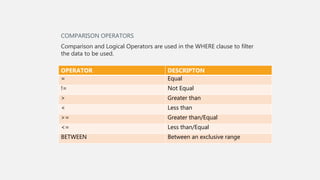SQL (Structured Query Language) is a programming language utilized for data storage, retrieval, and manipulation in relational databases. It encompasses three main command types: DDL (Data Definition Language), DML (Data Manipulation Language), and DCL (Data Control Language), alongside various constraints to ensure data integrity. SQL commands include creating, altering, and deleting database objects as well as retrieving and modifying data across defined conditions.
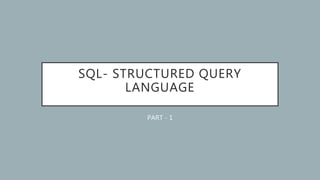
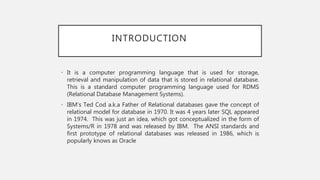
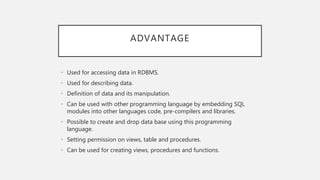



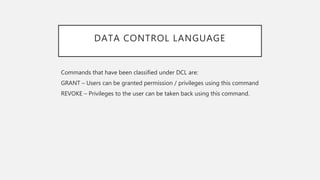
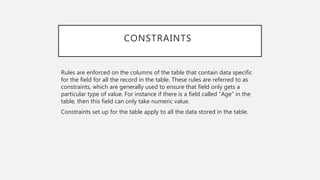
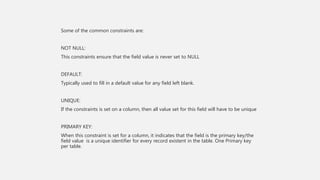

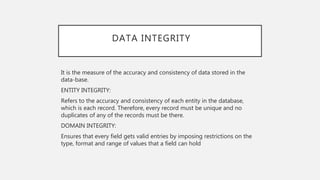


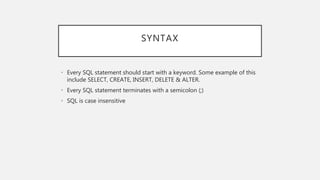
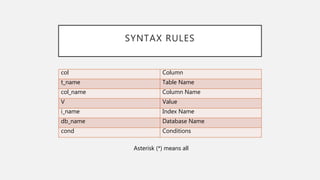


![DISTINCT:
In situations in which you have multiple duplicates records in a table, it
might make more sense to return only unique records, instead of fetching
duplicates.
Eg. SELECT DISTINCT column_name1, column_name2 FROM table_name.
LIMIT:
By default, all results that satisfy the conditions specified in the SQL
statement are returned. However, sometimes we need to retrieve just a
subset of records. In MySQL, this is accomplished by using the LIMIT
keyword.
SELECT column list FROM table_name LIMIT [Number of records]
Also allows to pick up a set of records from a particular offset.
Eg. We pick up 4 records, starting from the third position
SELECT ID, first name, last name, city FROM customers LIMIT 3,4;](https://image.slidesharecdn.com/sql-structuredquerylanguage-200619082943/85/SQL-Structured-Query-Language-18-320.jpg)


